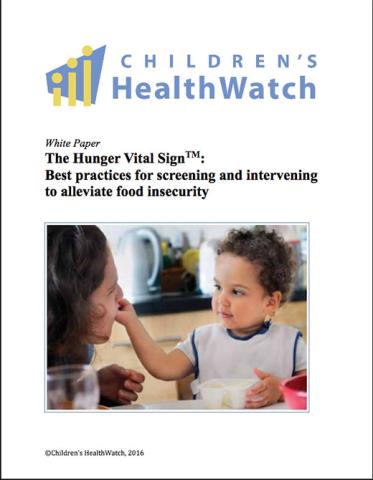The Hunger Vital Sign: Best practices for screening and intervening to alleviate food insecurity
Children's Health Watch
Introduction: The Hunger Vital SignTM (HVS) is a validated 2-question food insecurity screening tool that allows clinicians to accurately identify households at risk of food insecurity and address patient needs appropriately. Endorsed by the American Academy of Pediatrics, the tool is being used by hundreds of clinicians in the US and is being incorporated into electronic health record systems.1 As use increases, it is critical to identify best practices for screening appropriately and intervening effectively.
Methods: An online survey was developed for professionals currently using the HVS and several key informant interviews were conducted. The survey was sent online to forty contacts that are currently using the HVS. Survey response rates were examined alongside open-ended answers to determine common themes.
Results (n=20): Twenty respondents completed the survey. This preliminary research identified common practices for screening and intervening effectively, monitoring and evaluation strategies, sustainability concerns, as well as key lessons learned. Respondents represented health care -providers and anti-hunger advocacy organizations. While models for intervention varied, successful interventions were consistently attributed to strong partnerships between health care institutions and community-based organizations.
Conclusion: Our results contribute preliminary evidence on how screening and intervening for food insecurity specifically, and for social determinants of health in general, are being conducted in clinical and community-based settings. These initial findings reinforce the need for systematic approaches to screening, the use of validated screening tools, and the need for building strong links between medical care and community-based resources. While this research highlights themes and feedback from the front lines of care, more research is needed to provide a deeper understanding that includes patient perspectives, rural settings, identifies response differentials based on different screening methodologies, and identifies reliable funding streams for supporting this work. In general, more and more systematic follow-up research will be needed as practitioners continue to develop and refine models for screening for and intervening in food insecurity.
Rottapel R, Sheward R. The Hunger Vital Sign: Best practices for screening and intervening to alleviate food insecurity. Boston, MA: Children's Health Watch; 2016. Available online.
